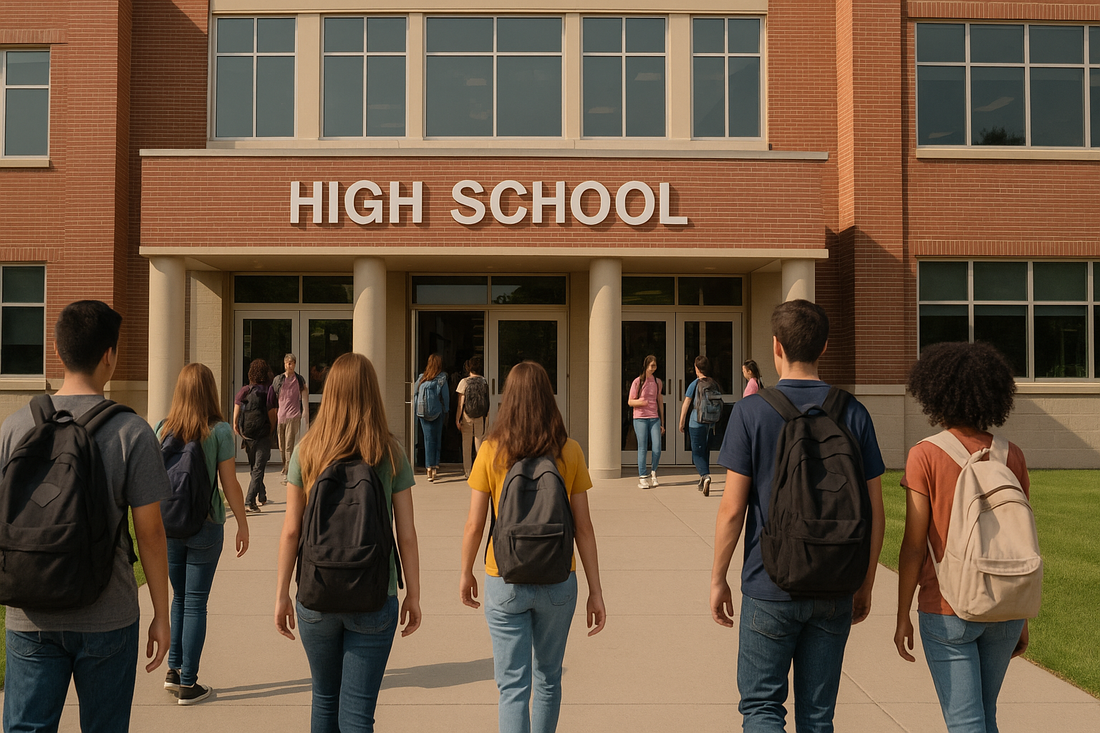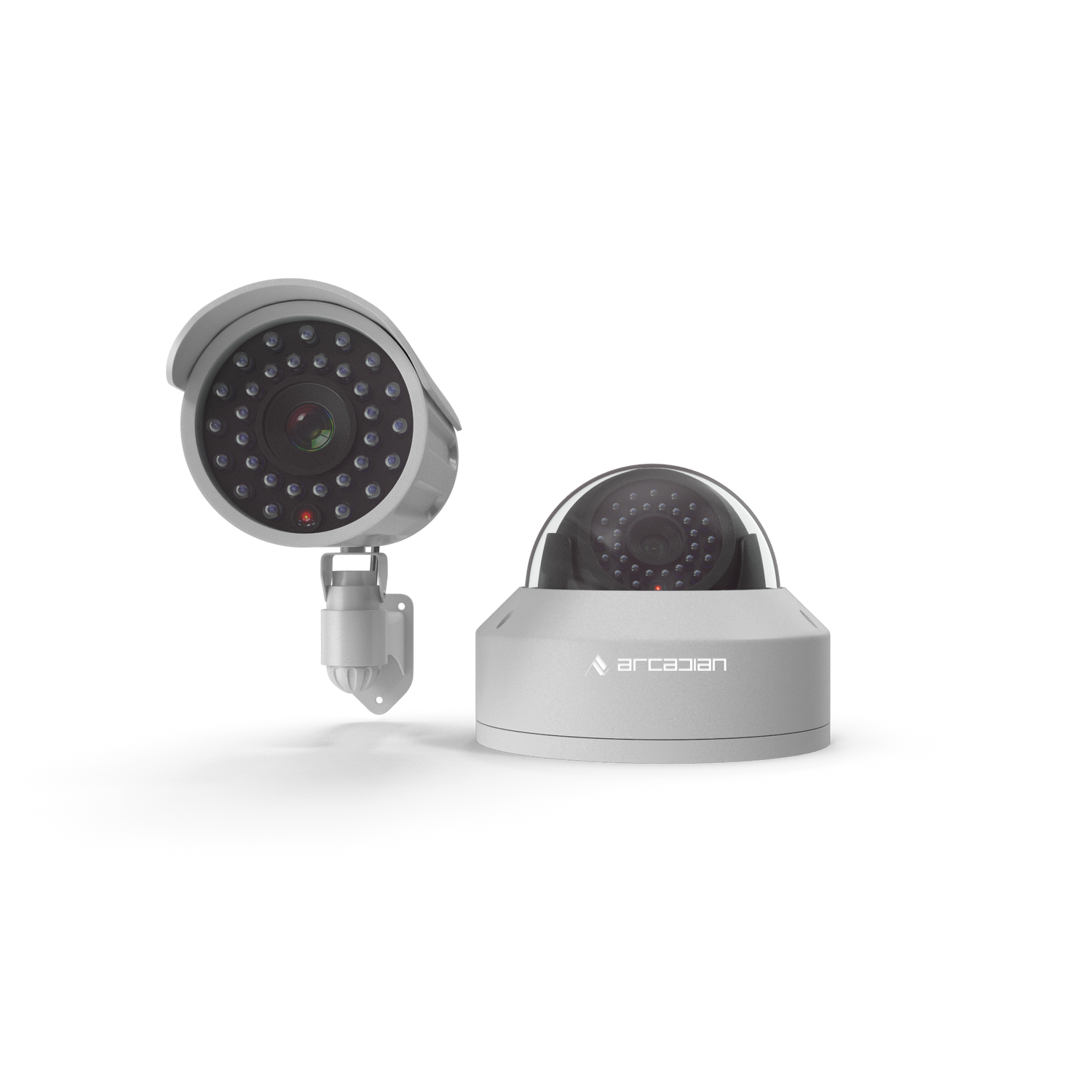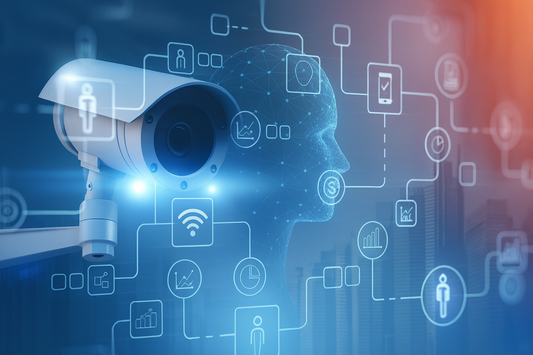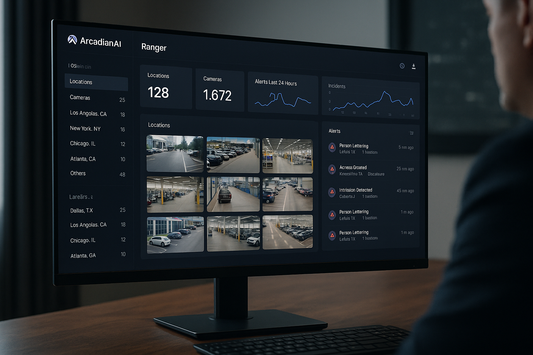School Security in 2025: Risks, Realities, and the Urgent Call for Smarter Protection
From Columbine to Uvalde, school violence has left lasting scars. In 2025, traditional cameras and outdated security measures still fail students. ArcadianAI introduces adaptive, AI-powered protection designed for schools of all sizes.

Introduction
School security is no longer a topic for the future — it is today’s most urgent conversation. According to the FBI’s 2024 School Safety Report, active shooter incidents in U.S. educational settings have increased by 89% since 2019, a sobering reminder that classrooms remain vulnerable spaces. From the Columbine massacre in 1999, to Sandy Hook Elementary in 2012, to the tragedy at Robb Elementary in Uvalde, Texas, in 2022, history has shown us that schools are not immune from the violence that haunts society.
Yet, despite billions spent on metal detectors, school resource officers, and surveillance cameras from companies like Verkada, Axis, and Hanwha, incidents continue to escalate. Why? Because most school security strategies remain static, fragmented, and reactive — relying on outdated CCTV systems, slow communication, and human monitoring that misses 99% of footage.
ArcadianAI offers a radically different approach. Powered by our adaptive AI assistant, Ranger, we transform every camera into a proactive, intelligent sensor that detects risks before they escalate — whether it’s a weapon drawn in a hallway, a fight breaking out on school grounds, or a cyber intrusion disabling access control. This post explores the layered risks schools face, the history of violence, the failures of legacy systems, and how cloud-native, camera-agnostic AI solutions can finally deliver the safety that parents, teachers, and communities demand.
Quick Summary / Key Takeaways
-
School shootings rose 89% since 2019.
-
Legacy cameras miss 99% of incidents due to human limits.
-
Cyber + physical convergence creates new vulnerabilities.
-
ArcadianAI Ranger delivers real-time, adaptive AI protection.
-
Security must evolve beyond static hardware into dynamic intelligence.
Background & Relevance
The urgency of school security has never been clearer. A 2024 National Center for Education Statistics survey found that 77% of schools reported at least one violent incident in the past year, and 14% faced threats involving firearms. Meanwhile, the Secret Service National Threat Assessment Center (NTAC) highlighted that most attackers exhibited warning signs — but schools often failed to identify them in time due to siloed systems and lack of proactive monitoring.
Traditional surveillance providers — Verkada, Genetec, Milestone, Eagle Eye Networks — have marketed their solutions as “AI-powered,” but in reality, many rely on simple motion detection or keyword-based alerts. When every second matters, false alarms and delayed detection cost lives.
Core Topic Exploration
Why Are Schools Targeted?
-
Symbolic value: Attacks on schools capture global attention.
-
Soft targets: Open campuses, minimal screening, and predictable schedules.
-
Mental health crises: Rising youth depression and radicalization trends.
-
Access to weapons: In the U.S., more than 19 million AR-15 style rifles are privately owned (Statista, 2024).
Historical Incidents That Changed Security Forever
-
Columbine High School (1999) — 13 killed. Sparked the first wave of school camera installations.
-
Virginia Tech (2007) — 32 killed. Highlighted communication breakdowns and slow lockdown protocols.
-
Sandy Hook Elementary (2012) — 26 killed. Triggered national debates over gun laws and access control.
-
Parkland, Florida (2018) — 17 killed. Surveillance cameras were present but footage was delayed 20 minutes.
-
Uvalde, Texas (2022) — 21 killed. Police waited 77 minutes; bodycam and hallway footage later exposed failures.
Each incident demonstrates not just violence, but system failure — cameras that only recorded after the fact, communication silos that slowed response, and an overreliance on humans to interpret massive amounts of data.
Key Security Risks Schools Face Today
-
Active Assailants & Shootings — The most devastating risk, but not the only one.
-
Bullying & Fights — Often escalate into larger incidents when ignored.
-
Vandalism & Intrusions — Costly and demoralizing for school communities.
-
Cyber-Physical Attacks — Hackers disabling cameras (as seen in 2023 Los Angeles USD ransomware attack).
-
Insider Threats — Students, staff, or contractors bypassing access controls.
-
Environmental Risks — Fires, floods, or hazardous material leaks.
Why Traditional Systems Fail
-
NVRs (Network Video Recorders): Static, expensive, and limited to local networks.
-
VMS (Video Management Systems): Complex and often require trained operators.
-
VSaaS (Video Surveillance as a Service) providers like Verkada: Offer convenience but lock schools into closed ecosystems, with privacy controversies (e.g., Verkada’s 2021 camera breach exposing schools and hospitals).
-
Human Monitoring: Studies show operators lose focus after 20 minutes, making real-time detection nearly impossible.
How ArcadianAI + Ranger Solves These Gaps
-
Adaptive AI: Detects anomalies beyond pre-programmed rules.
-
Cloud-Native: Accessible anywhere, resilient against local network failures.
-
Camera-Agnostic: Works with Axis, Hanwha, Hikvision, or even legacy analog feeds.
-
Real-Time Alerts: Notifies staff and first responders instantly via mobile.
-
Forensic Search: Enables administrators to review weeks of footage in seconds.
Comparisons & Use Cases
| Feature / Provider | NVR (Generic) | Genetec VMS | Verkada VSaaS | ArcadianAI Ranger |
|---|---|---|---|---|
| Camera Compatibility | Limited | Moderate | Closed System | Universal (Any Brand) |
| AI Detection | Basic Motion | Object Rules | Marketing AI | Adaptive Intelligence |
| Deployment | On-Prem Only | Hybrid | Cloud-Only | Cloud-Native |
| Response Speed | Minutes-Hours | Minutes | Variable | Real-Time Seconds |
| Privacy & Compliance | Limited NDAA | Partial | Controversial Breaches | Full NDAA/GDPR Alignment |
| Cost Efficiency | High CAPEX | Moderate | Subscription Lock-In | Scalable SaaS |
Real-World Use Cases
-
Elementary Schools: Ranger detects perimeter breaches during off-hours.
-
High Schools: AI flags potential fights before escalation.
-
Universities: Integration with access control prevents unauthorized lab entry.
-
District-Level: Centralized dashboards allow administrators to monitor 20+ schools from one interface.
Common Questions (FAQ)
Q1: How can AI prevent school shootings?
AI cannot stop intent, but it detects early risks — weapons drawn, loitering near entrances, or fights escalating — giving responders critical seconds.
Q2: Are AI cameras compliant with student privacy laws?
ArcadianAI is NDAA and GDPR compliant, avoiding biometric storage and focusing on behavior-based detection.
Q3: Why not just hire more guards?
Human guards are essential but limited — they cannot monitor 200+ cameras simultaneously. AI extends their reach.
Q4: Can Ranger integrate with existing school cameras?
Yes, Ranger is camera-agnostic and works with Axis, Hanwha, Hikvision, and more.
Q5: How much does AI school security cost?
ArcadianAI scales per camera per month, often replacing costly NVR/VMS upgrades and reducing guard overtime.
Conclusion & CTA
The history of school violence shows us one truth: traditional security is not enough. Cameras that only record, alarms that trigger too late, and fragmented communication put students and staff at risk. ArcadianAI’s Ranger redefines protection with adaptive AI that learns from every incident, adapts to every campus, and empowers administrators with real-time, actionable intelligence.
Safety cannot wait. The question is not whether your school can afford smarter security — it’s whether you can afford to go without it.
See ArcadianAI in Action → Get Demo – ArcadianAI
Security Glossary (2025 Edition)
Active Assailant — An individual actively engaged in killing or attempting to kill in a confined and populated area, often in schools.
Adaptive AI — AI that learns and adjusts in real time to changing environments and threats, unlike static rule-based analytics.
Access Control — Systems that regulate who can enter school facilities, often through keycards or biometric scanners.
Bullying Detection — AI analytics designed to identify aggressive behavior patterns in hallways, classrooms, or cafeterias.
Columbine Effect — The cultural and procedural impact of the 1999 Columbine shooting on global school security practices.
Cyber-Physical Attack — An attack that compromises both digital systems (networks, cameras) and physical environments (doors, alarms).
Genetec VMS — A widely used video management system provider for schools and enterprises, with hybrid deployments.
NDAA Compliance — Standards ensuring security technology is authorized for U.S. government and educational use.
NVR (Network Video Recorder) — Local recording device for cameras, often limited in storage and scalability.
Parkland Incident (2018) — A Florida high school shooting where delayed surveillance and communication contributed to casualties.
Privacy vs Security — The balance between protecting students’ safety and maintaining compliance with FERPA and GDPR.
Ranger (ArcadianAI) — ArcadianAI’s adaptive AI assistant that transforms any school camera into a proactive virtual guard.
School Resource Officer (SRO) — Police officers assigned to schools, often criticized for reactive, not preventative, roles.
SRO Fatigue — Burnout experienced by school resource officers due to high expectations and insufficient technology support.
Uvalde Tragedy (2022) — A Texas school shooting where response delays and camera mismanagement contributed to failures.
Verkada Breach (2021) — A major data breach exposing thousands of school and hospital cameras to hackers.
VSaaS (Video Surveillance as a Service) — Cloud-based surveillance where storage, analytics, and access are subscription-based.
Weapon Detection AI — Algorithms trained to recognize firearms or knives in live video feeds.
Zero-Tolerance Policy — School disciplinary policy often linked with post-Columbine security strategies.

Security is like insurance—until you need it, you don’t think about it.
But when something goes wrong? Break-ins, theft, liability claims—suddenly, it’s all you think about.
ArcadianAI upgrades your security to the AI era—no new hardware, no sky-high costs, just smart protection that works.
→ Stop security incidents before they happen
→ Cut security costs without cutting corners
→ Run your business without the worry
Because the best security isn’t reactive—it’s proactive.







